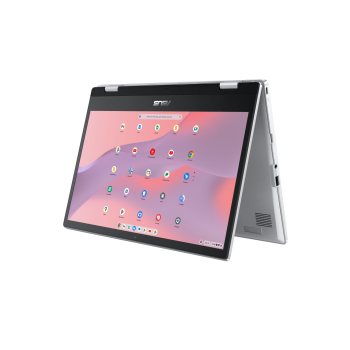- Affordable
- Long battery life
- Lightweight and portable
- Lightweight and portable
- Good performance for everyday tasks
- Affordable price
- Limited storage
- Basic performance
- Limited storage capacity
- Not suitable for heavy gaming
HP Chromebook 14 vs ASUS VivoBook 15
When it comes to budget laptops, two popular options that often come to mind are the HP Chromebook 14 and the ASUS VivoBook 15. Both devices offer an affordable solution for those looking for a reliable laptop without breaking the bank. In this comparison, we'll delve into the features, specifications, and performance of these two budget laptops to help you decide which one best suits your needs.
Design and Display
The HP Chromebook 14 boasts a sleek and compact design, weighing in at just 3.4 pounds and measuring 13.27 inches wide, 8.9 inches deep, and 0.7 inches thick. Its 14-inch HD display features a resolution of 1366 x 768 pixels, which is suitable for basic tasks like browsing, streaming, and document editing. The ASUS VivoBook 15, on the other hand, has a slightly larger 15.6-inch Full HD display with a resolution of 1920 x 1080 pixels, making it ideal for watching videos, gaming, and multitasking. The VivoBook 15 is also slightly heavier, weighing in at 3.96 pounds, but its slim profile and compact design make it easy to carry around.
Processor and Performance
Under the hood, the HP Chromebook 14 is powered by an Intel Celeron N3350 processor, which provides sufficient performance for basic tasks like web browsing, email, and office work. The device also features 4GB of RAM and 32GB of eMMC storage, which can be expanded via a microSD card slot. In contrast, the ASUS VivoBook 15 is equipped with a more powerful Intel Core i3-1005G1 processor, 8GB of RAM, and a 256GB SSD, making it better suited for demanding tasks like photo editing, video streaming, and gaming.
Operating System
One significant difference between these two budget laptops is their operating system. The HP Chromebook 14 runs on Google's Chrome OS, which is designed specifically for web-based applications and offers seamless integration with Google Drive, Gmail, and other Google services. The ASUS VivoBook 15, on the other hand, runs on Windows 10 Home, providing access to a wider range of software applications and compatibility with Microsoft Office.
Battery Life
In terms of battery life, the HP Chromebook 14 has an impressive up to 13 hours and 30 minutes of runtime, making it perfect for students, commuters, or anyone who needs a laptop that can last throughout the day. The ASUS VivoBook 15, while not as long-lasting, still offers a respectable up to 8 hours of battery life, which is sufficient for most users.
Price
Both laptops are priced affordably, with the HP Chromebook 14 starting at around $250 and the ASUS VivoBook 15 starting at around $350. However, it's worth noting that the VivoBook 15 offers more features, better performance, and a larger display, making it a more value-for-money option in the budget laptops category.
Conclusion
In conclusion, while both the HP Chromebook 14 and the ASUS VivoBook 15 are excellent options for budget laptops, they cater to different needs and preferences. The HP Chromebook 14 is ideal for those who want a lightweight, easy-to-use device for basic tasks, web browsing, and Google services integration. The ASUS VivoBook 15, on the other hand, offers more powerful performance, a larger display, and Windows 10 compatibility, making it suitable for users who need a laptop for more demanding tasks, gaming, or software applications. Ultimately, the choice between these two budget laptops depends on your specific requirements and priorities.































